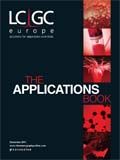Providing a Universal, One-step Alternative to Liquid-Liquid Extraction in Bioanalysis
Waters Application Note
Introduction
Liquid-liquid extraction (LLE) and solid-support liquid-liquid extraction (SSLE) are common sample preparation choices in regulated bioanalysis. LLE and SSLE can generate high analyte recoveries, clean extracts, and LLE is perceived as low cost. Depending on the compounds analyzed, however, these methods must often be optimized. Extraction solvents may need to be acidified, basified, buffered or low percentages of more polar solvents may be required to simultaneously achieve high recoveries for metabolites and related compounds, as well as the primary analyte. In many cases, the choice of solvent may lead to extracts particularly saturated with phospholipids (PLs). As well as contributing to matrix effects, residual PLs can build-up on the analytical column and the LC system. PL build-up may cause analyte signal variability, suppression of MS response, and potentially lead to instrument down-time. As an alternative to LLE and SSLE, the Ostro sample preparation plate provides a simple, one-step method which achieves high recoveries for diverse analyte types without optimization. The Ostro plate also removes more PLs than LLE and more or equivalent PLs than SSLE. In addition, as Ostro extraction is performed with formic acid in acetonitrile, samples can be diluted and directly injected. This is in contrast to LLE and SSLE extracts which must be evaporated and reconstituted prior to injection.

Figure 1: Comparison of PLs remaining in Ostro samples extracted using the basic method and (a) LLE using a variety of extraction solvents: (LLE 1) 100% MTBE (LLE 2) 98/2% hexane/isoamyl alcohol (LLE 3) 60/40% cyclohexane/dichlormethane and (b) SSLE with the same solvents.
Results
A diverse set of analyte samples were processed on the Ostro 96-well plate using a generic, simple protocol provided by the manufacturer. Using the generic protocol, the Ostro plate provided overall significantly better recovery for the analytes tested than LLE [Figure 1(a)] and SSLE [Figure 1(b)] which were each tested with 3 extraction solvents: 100% MTBE, 98/2% hexane/isoamyl alcohol (v/v), and 60/40% cyclohexane/dichloromethane (v/v). The average recovery for all analytes using the Ostro plate was 80%. The average recovery for all analytes using LLE and SSLE was 23% and 17%. The Ostro 96-well plate also removed significantly more PLs than LLE [Figure 2(a)] and removed significantly less or a comparable level of PLs to SSLE [Figure 2(b)] In addition, matrix effects were calculated. The Ostro plate extracts generated less or equivalent matrix effects than LLE and SSLE.

Figure 2: Average analyte recovery of a diverse analyte mix using the Ostro 96-well plate and (a) LLE with 100% MTBE, 98/2% hexane/isoamyl alcohol (v/v), and 60/40% cyclohexane/dichloromethane and (b) SSLE with the same solvents.
Waters Corporation
34 Maple Street, Milford, Massachusettes 01757, USA
tel: +1 (508) 478-2000 fax +1 (508) 478-1990
Website: http://www.waters.com

Separating Impurities from Oligonucleotides Using Supercritical Fluid Chromatography
February 21st 2025Supercritical fluid chromatography (SFC) has been optimized for the analysis of 5-, 10-, 15-, and 18-mer oligonucleotides (ONs) and evaluated for its effectiveness in separating impurities from ONs.











